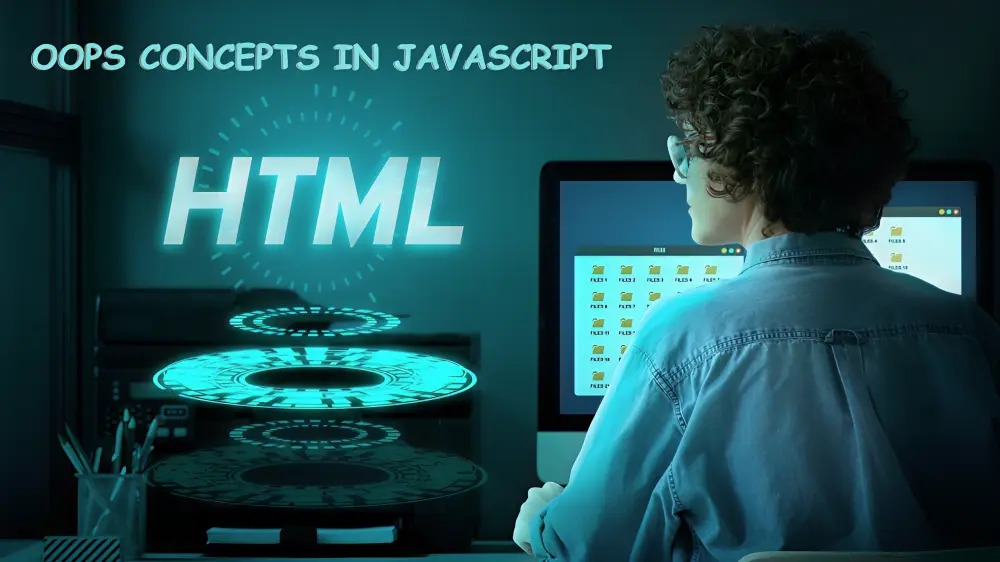Writing scalable, effective, and clean code is a goal shared by all Javascript developers, and it starts with an understanding of Object-Oriented Programming (OOP). Javascript uses classes and objects to implement OOP principles even though it is a prototype-based language. We’ll examine the fundamental OOPS concepts in Javascript in this blog post.
What are OOPS Concepts in Javascript?
In essence, object-oriented programming, or OOP, is a paradigm for organizing code into self-contained, reusable objects. It centers on the idea of objects, which stand in for actual entities in the real world with their characteristics (data) and actions (methods). OOP encourages code encapsulation and reuse, which enables programmers to write modular, maintainable, and scalable code. The ideas that support object-oriented programming in Javascript are known as OOP concepts.
Advantages of OOPS concepts in Javascript
- While code grows as a project gets larger in a procedure-oriented programming language, this can be difficult to manage. In contrast, OOPS makes development and maintenance easier.
- Object-oriented programming languages (OOPS) offer data hiding, but global data in those languages can be accessed from anywhere.
- OOPS makes it possible to simulate real-world events considerably more successfully. If an object-oriented programming language is being used, we can offer solutions for actual word problems.
The Four Pillars of OOPS Concepts in Javascript
- Abstraction: Since abstract classes act as a model for derived classes, subclasses are required to implement common methods and properties. Interfaces are not supported by Javascript natively, but they can be simulated by using object literals or documentation to define expected properties and methods. Abstraction helps developers focus on high-level concepts and functionalities by providing a layer of concealment for complex implementation details.
- Inheritance: Through the process of inheritance, an object can inherit methods and properties from a parent object, also referred to as a superclass or base class. It encourages the hierarchical relationships between objects and the reuse of code. Prototypal inheritance is the method used in Javascript to implement inheritance. Every object has a prototype object associated with it, from which properties and methods that are absent from the object itself are inherited. This allows objects to retain the ability to add or override specific behaviors while sharing common functionality. Developers can improve code organization, minimize duplication of code, and create relationships between objects based on similarities and hierarchies by utilizing inheritance.
- Polymorphism: It is possible to treat objects of different types as interchangeable entities thanks to polymorphism. It encourages code extensibility and gives code designers more freedom. Because Javascript uses dynamic typing, polymorphism is built into the language. This implies that if two object types share a common set of methods or support the necessary interface, they can use the same function or method. Because of this flexibility, code can work with objects of different types without having to check each one’s type explicitly. In addition to making code easier to read and maintain, polymorphism can help write more generic and reusable functions.
- Encapsulation: The process of combining methods and data into a single unit called an object is called encapsulation. It encourages code modularity and reusability by enabling the organization of related data and operations. Data concealing and access control are the two main advantages of encapsulation. An object’s internal state is concealed from outside entities by encapsulating data. As a result, direct manipulation is prevented and data integrity is maintained by ensuring that the data can only be accessed and modified through approved methods. Developers can manage object members’ visibility and accessibility through access control mechanisms like private and public modifiers. Javascript encapsulation can be accomplished with closures, IIFE (Immediately Invoked Function Expressions), and modules, among other methods.
Classes in Javascript
Since we now understand what an object is, let’s define a class. A class in Javascript is a template used to create objects that have common methods and properties. It offers an organized method for defining and producing several instances of related objects. Classes in Javascript provide a more structured method of object-oriented programming and adhere to the syntax defined in ECMAScript 2015 (ES6).
In Javascript, the class keyword and the class name are used to create a new class. A constructor method, which is a unique method called when a new instance of the class is created, may be present in the class. The object’s properties are initialized using the constructor.
You can define methods inside a class that specify how the class instances behave. The class instances have access to and can call these methods. Static methods that are linked to the class itself rather than its instances can also be defined. An instance of a Javascript class is as follows:
class Car {
constructor(make, model, year) {
this.make = make;
this.model = model;
this.year = year;
}
getAge() {
const currentYear = new Date().getFullYear();
return currentYear – this. year;
}
static isOld(car) {
return car.getAge() >= 10;
}
}
const myCar = new Car(“Toyota”, “Camry”, 2018);
console.log(myCar.getAge()); // Output: 5
console.log(Car.isOld(myCar)); // Output: false
Conclusion
Gaining proficiency in Javascript requires an understanding of OOPS concepts in Javascript. Encapsulation, inheritance, polymorphism, and abstraction are the building blocks that enable programmers to write code that is more streamlined and effective. Programmers can create reliable applications, improve code reuse, and improve software architecture by understanding these ideas.





